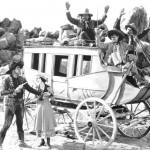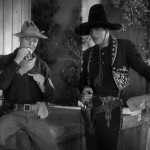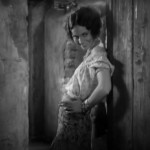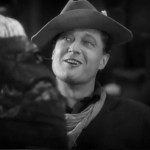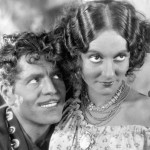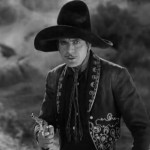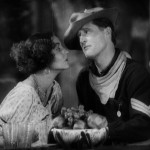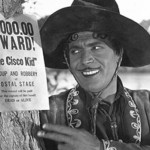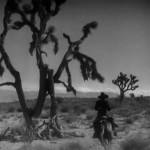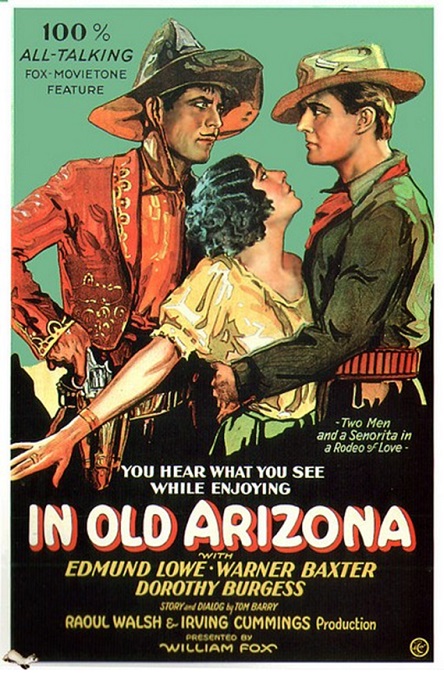

In Old Arizona – 1928 / 1929
Here we have the first western that was nominated for the Best Picture award. Again, it was made right at the point where the silent era was dying and the talkie era was beginning. That being said, the actors were still acting the only way they knew how. They were making the big gestures and over-exaggerated facial expressions that were necessary for silent films. The subtleties of the new style of acting had not yet taken hold.
It starred Warner Baxter as the Cisco Kid, one of the most infamous criminals of the Old West. He was young, attractive and charming. But he also robbed stagecoaches at gunpoint and that sort of thing. Despite that fact, the film portrayed him as a sympathetic character. For example, he made a point of not stealing from any hard-working individuals. He only robbed businesses which could afford the losses. In fact, when it is revealed that some of what he stole belonged to a common man, he returned it to him with a smile, though he did so without revealing his identity.
He was a rascal who evaded the law, using nothing more than his wit and charm. He toyed with them, always maintaining his anonymity and making them look like fools. Even though he was technically the bad guy, the film portrays him as the hero.
But, all that being said, he had his one weakness, and her name was Tonia Maria. She was played by actress Dorothy Burgess, who incidentally was the worst offender of the “silent movie” style acting in the film. Tonia was a two-timing vamp who was selfish, devious and self-serving. Like most classic vamps, she used sex to get what she wanted, and it was the only way she knew how to behave when dealing with men.
The Cisco Kid was, however, crazy about her. He bought her things and professed his love for her over and over. But there was a fly in the ointment. The army officer charged with bringing in the Kid was Sergeant Mickey Dunn, played by Edmund Lowe. Tonia casts her spell on him and he is smitten with her, as is she of him, despite his arrogance and swagger.
Ah, the dramatic possibilities are endless. But suffice to say, that Tonia gets her just rewards in the end. She is accidentally killed by Dunn. You see, The Cisco Kid learned of her unfaithfulness and her plan to turn him in for the reward money. He engineered the accident and got away scot-free. But that’s alright, since by this point we have been captured by his charismatic charms.
The film was good in that it used authentic locations in Bryce Canyon National Park, Zion National Park, San Fernando Mission and the Mojave Desert. It also had the distinction of being the first talkie to be filmed outdoors, which at the time was a pretty impressive feat. In fact, the use of background sounds, which by today’s standards are taken for granted, such the sizzling of ham and eggs in a frying pan, or the rattle of a stagecoach as it rolls through the desert, were a novelty for the audiences of the 1920s.
However, the film’s biggest flaw was the pacing, which was pretty slow. The movie was just over an hour and a half long, but I think the story could have been easily told in less than an hour.
Interesting note: The original Cisco Kid was a fictional character created by O. Henry in his short story, The Caballero’s Way. He was supposed to be a 25 year-old desperado who killed for sport and was responsible for at least 18 deaths. In this film, he killed no-one.
